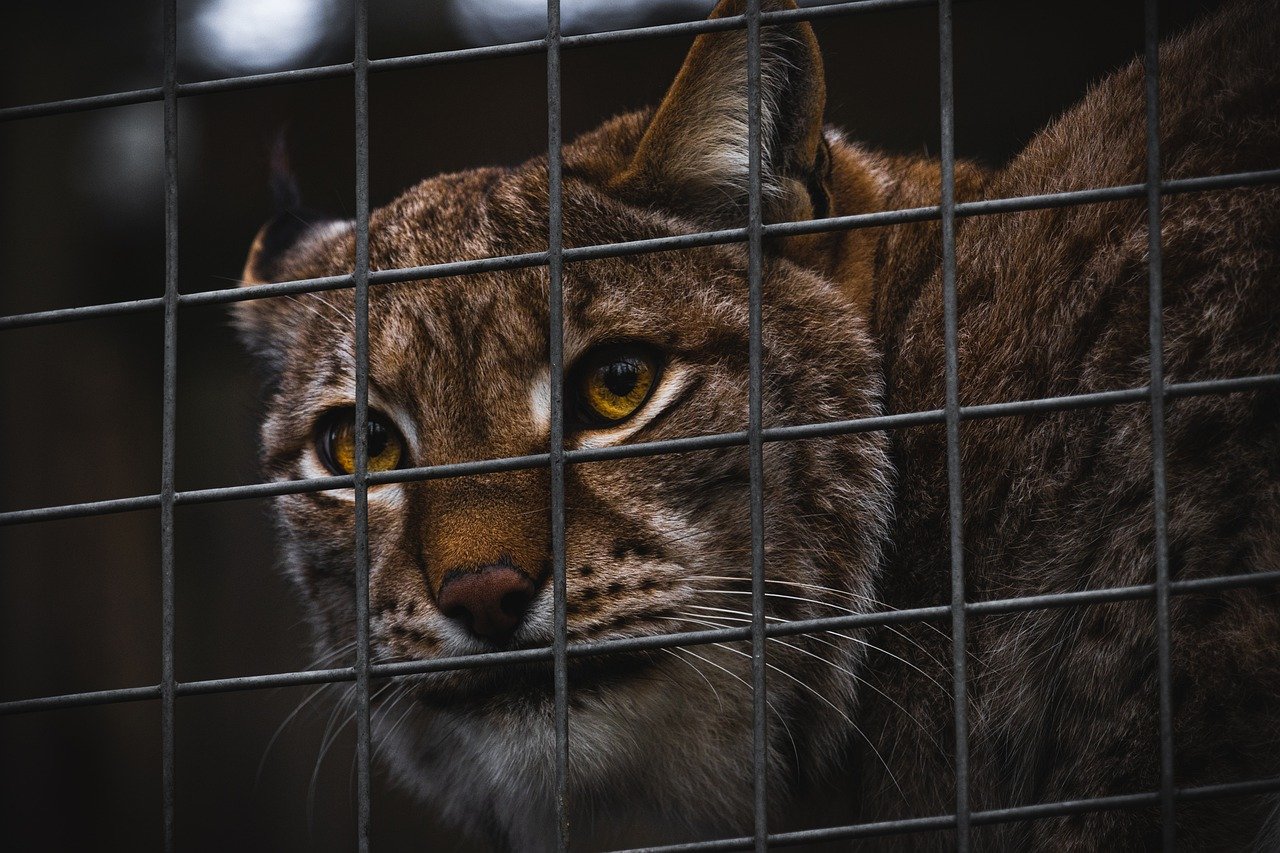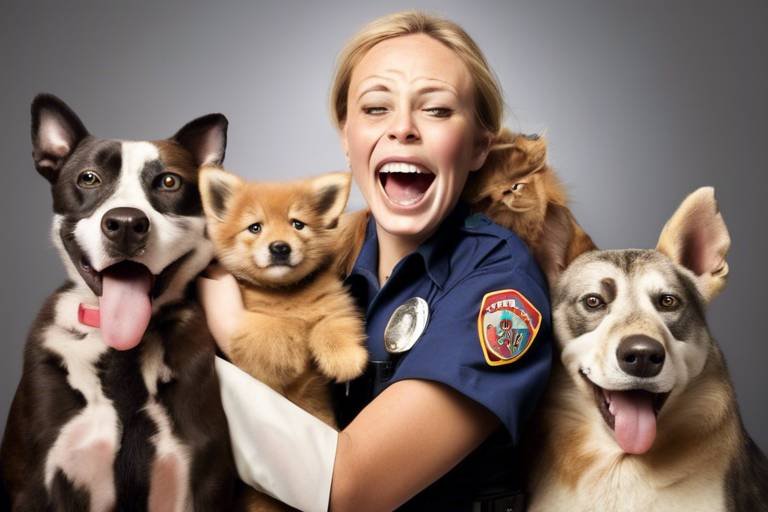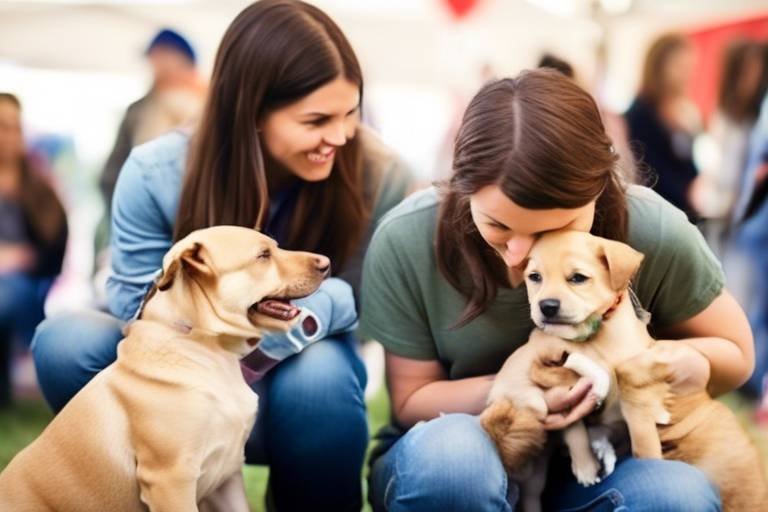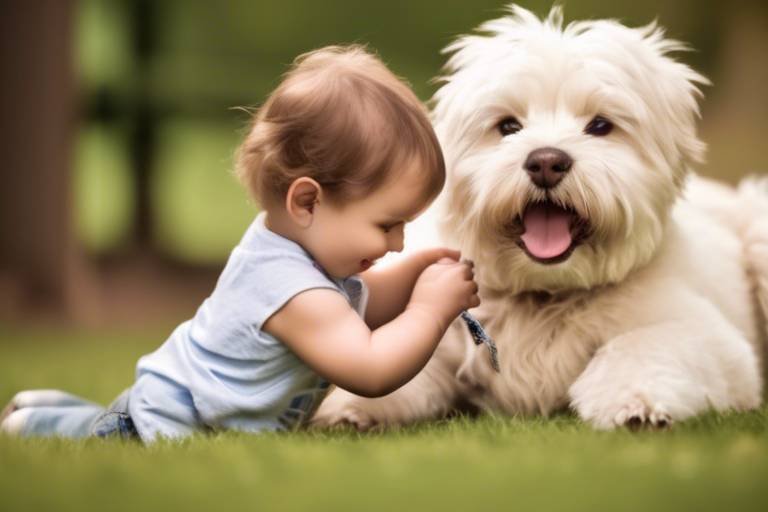How to Celebrate Community Heroes in Animal Rescue
In every neighborhood, there are unsung heroes working tirelessly to make a difference in the lives of animals. These dedicated individuals and organizations often go unnoticed, yet their contributions to animal rescue are invaluable. Celebrating these community heroes not only honors their hard work but also inspires others to join the cause. Whether it's through local events, social media recognition, or educational programs, there are countless ways to shine a spotlight on those who are making a positive impact. In this article, we will explore various methods for recognizing and celebrating these champions of animal welfare, ensuring that their stories are told and their efforts are appreciated.
Celebrating local animal rescuers is crucial for fostering a sense of community and appreciation for their efforts. One effective way to highlight their contributions is by organizing community events that bring people together to share stories and experiences. Additionally, awards can be given to individuals or organizations that have shown exceptional dedication to animal rescue, creating a sense of pride and motivation for continued efforts. Social media campaigns can also amplify their stories, providing a platform for the community to engage and support these heroes. Imagine a post that goes viral, showcasing the incredible work of a local rescue group—this not only raises awareness but also encourages others to get involved.
Community events serve as a fantastic platform to celebrate animal rescuers and the impact they have on both animals and the community. From fundraisers to awareness walks, these gatherings can create a sense of unity and purpose. For example, consider hosting an adoption drive where local rescue organizations can showcase their animals, allowing potential adopters to meet them in a friendly environment. Such events not only help animals find homes but also honor the hard work of those who rescued them.
Fundraising initiatives are vital for supporting animal rescue efforts directly. There are many creative ways to raise funds, including:
- Auctions: Organizing a charity auction where local businesses donate goods or services can draw a crowd and generate significant funds.
- Bake Sales: Community bake sales can be a fun way to engage families while raising money for local rescues.
- Crowdfunding Campaigns: Utilizing online platforms to create crowdfunding campaigns tailored to local needs can expand outreach and encourage community involvement.
Utilizing online fundraising platforms can significantly enhance your reach and engagement. Websites like GoFundMe, Kickstarter, or even Facebook Fundraisers allow individuals and organizations to create campaigns that resonate with potential donors. Here are some tips for creating effective online campaigns:
- Tell a compelling story that connects emotionally with your audience.
- Use high-quality images and videos to showcase the animals and the work being done.
- Set clear goals and provide updates to keep donors informed and engaged.
Partnering with local businesses can further enhance fundraising efforts. Many businesses are willing to contribute to community causes through sponsorships, donations, or hosting events. For instance, a local pet store may host a charity event where a portion of sales goes to an animal rescue organization. This not only supports the rescue but also promotes the business within the community.
Awareness campaigns are essential for educating the public about the needs of animal rescue organizations. Running effective campaigns can inform the community about the importance of spaying and neutering pets, the benefits of adopting from shelters, and the ongoing challenges faced by rescue groups. Social media, local news outlets, and community bulletin boards can serve as excellent platforms for these campaigns, helping to spread the word and inspire action.
Educational programs play a crucial role in empowering the community to take action in animal welfare. Workshops, school programs, and community talks can be instrumental in teaching responsible pet ownership and animal care. By equipping individuals with knowledge, we can foster a culture of compassion and responsibility towards animals.
Workshops for pet owners can provide valuable insights into various topics, such as training, nutrition, and healthcare. These sessions can help pet owners understand their responsibilities and the best practices for keeping their animals happy and healthy. Imagine a workshop where experts share tips on training techniques that not only improve pet behavior but also strengthen the bond between pet and owner.
School outreach programs are an excellent way to instill compassion for animals in young minds. By incorporating animal welfare education into school curricula, we can inspire future generations of animal advocates. Programs can include interactive activities, guest speakers from local rescues, and even field trips to shelters, providing students with firsthand experience of the importance of animal welfare.
Sharing success stories is one of the most powerful ways to motivate others to get involved in animal rescue. Highlighting the impact that local rescuers have made through storytelling can encourage community members to participate in rescue efforts. Whether it’s a heartwarming tale of a dog finding its forever home or a rescue organization saving dozens of animals from neglect, these narratives can inspire action and foster a sense of community pride.
Q: How can I get involved in local animal rescue efforts?
A: There are many ways to get involved, including volunteering at local shelters, fostering animals, or participating in community events.
Q: What types of donations are most helpful for animal rescues?
A: Donations can include financial contributions, pet supplies, food, or even your time as a volunteer.
Q: How can I raise awareness for animal rescue in my community?
A: Organizing events, using social media, and educating friends and family are great ways to raise awareness.

Recognizing Local Animal Rescuers
Celebrating local animal rescuers is crucial for fostering a sense of community and encouraging others to join the noble cause of animal welfare. These individuals and organizations often work tirelessly behind the scenes, dedicating their time, resources, and love to save and rehabilitate animals in need. By recognizing their efforts, we not only honor their commitment but also inspire others to take action. So, how can we shine a spotlight on these heroes? One effective way is through community events that bring everyone together to celebrate their achievements. Imagine a gathering where stories of rescues are shared, and the community can come together to applaud these unsung heroes. It’s not just about the accolades; it’s about creating a culture of appreciation and support.
Another powerful method is to implement awards that specifically recognize the contributions of local animal rescuers. These awards can be given annually, celebrating various categories such as "Rescuer of the Year," "Best Foster Home," or even "Community Advocate." Not only do these awards highlight individual efforts, but they also serve as a reminder of the collective impact that these rescuers have on the lives of animals and the community. Imagine the pride and motivation that comes from receiving such recognition!
Social media campaigns also play a vital role in amplifying their stories. By sharing heartfelt posts, photos, and videos that showcase the incredible work being done, we can reach a wider audience. Platforms like Facebook, Instagram, and Twitter can be utilized to create hashtags that rally support for local rescues, making their work more visible. For instance, a campaign titled #LocalRescueHeroes could encourage community members to share their experiences with local rescuers, creating a ripple effect of awareness and appreciation.
In addition to these methods, creating a dedicated website or blog that features local rescuers can serve as a central hub for information and stories. This can include interviews with rescuers, success stories of animals that have found their forever homes, and resources for those looking to get involved. By providing a platform for these narratives, we not only celebrate the heroes but also educate the public on how they can contribute to the cause. After all, every small action counts in the fight for animal welfare!
Ultimately, recognizing local animal rescuers is about building a community that values compassion and action. By celebrating their efforts, we create an environment where animal welfare is prioritized, and everyone feels empowered to make a difference. So, let’s roll up our sleeves and get involved—because together, we can create a brighter future for our furry friends!

Organizing Community Events
Community events are not just gatherings; they are powerful platforms that celebrate the heroes of animal rescue while uniting people for a common cause. Imagine a vibrant park filled with families, friends, and furry companions, all coming together to honor those who dedicate their lives to rescuing animals in need. These events can take various forms, each with its unique flair, but they all share a common goal: to raise awareness and funds for animal rescue initiatives.
One of the most effective ways to organize such events is through fundraisers, which not only generate much-needed resources but also foster community spirit. Picture a lively auction where local artisans donate their crafts, or a bake sale filled with mouth-watering treats prepared by community members. These initiatives not only provide financial support but also create a sense of belonging and collaboration among participants.
Another engaging option is to host awareness walks. Imagine hundreds of dog lovers strutting through the streets with their pets, proudly showcasing their furry friends while raising awareness about the importance of animal rescue. These walks can be both fun and informative, featuring booths that educate participants on responsible pet ownership and the various ways to get involved in local rescues. It's a win-win situation: the community gets to enjoy a day out while supporting a noble cause.
Additionally, adoption drives can be a fantastic way to celebrate animal rescuers. By partnering with local shelters, you can organize events where people can meet and adopt animals in need of loving homes. These drives not only help find forever homes for pets but also highlight the tireless work of rescuers who nurture and rehabilitate these animals. It’s an emotional rollercoaster for many, but seeing a dog or cat find its new family is the ultimate reward.
To ensure these events are successful, it's essential to promote them effectively. Utilize social media platforms to spread the word, share engaging content, and highlight the stories of local heroes in animal rescue. By creating buzz around the events, you can draw in more participants and potential donors, amplifying the impact of your efforts.
In summary, organizing community events is an incredible way to honor animal rescuers and engage the public in meaningful ways. Whether through fundraisers, awareness walks, or adoption drives, these gatherings not only celebrate the heroes among us but also inspire others to join the cause. So, gather your community, roll up your sleeves, and let’s make a difference together!
- How can I get involved in organizing community events?
Start by reaching out to local animal rescue organizations and discussing potential collaborations. Gather a team of passionate individuals and brainstorm event ideas that resonate with your community. - What types of events are most effective for raising awareness?
Events like awareness walks and adoption drives tend to attract a lot of attention. Fundraisers, such as auctions or bake sales, can also be very effective in generating funds and awareness. - How can I promote my event effectively?
Utilize social media platforms, local community boards, and flyers in pet stores or veterinary clinics. Engaging stories and visuals can help capture attention and encourage participation.
Fundraising Initiatives
When it comes to supporting animal rescue efforts, are not just helpful; they are essential. These initiatives can take many forms, each with its unique charm and impact. Imagine hosting a vibrant community auction where local artists donate their work, or a bake sale that fills the air with the sweet aroma of homemade goodies. Not only do these activities raise money, but they also foster a sense of community and shared purpose. It’s like throwing a party for a cause – everyone loves to join in!
One of the most exciting ways to raise funds is through crowdfunding campaigns. Platforms like GoFundMe and Kickstarter allow you to reach a broader audience, tapping into the goodwill of animal lovers far and wide. The beauty of these platforms is that they enable you to tell your story—your mission, your needs, and your successes. When potential donors see the impact of their contributions, it creates a powerful connection. They’re not just giving money; they’re becoming part of a movement. To make your campaign successful, ensure you have compelling visuals, clear goals, and a heartfelt narrative that resonates with people’s emotions.
Additionally, consider organizing a themed fundraising event. Think of a “Paws and Claws Gala” where attendees dress up with their pets. Charge for entry, offer a silent auction, and have local businesses sponsor the event. This not only raises funds but also raises awareness about your cause. Just imagine the camaraderie as people share their love for animals, all while contributing to a noble cause. It’s a win-win situation!
Lastly, don’t underestimate the power of local business partnerships. Many businesses are eager to support community initiatives, especially those focused on animal welfare. You could approach them for sponsorships or donations. For instance, a local pet store might be willing to donate a portion of their sales on a specific day to your rescue organization. Or, a coffee shop could host a “paws for a cause” day where a percentage of all sales goes to your initiative. These partnerships not only provide financial support but also help in spreading the word about your mission.
To summarize, fundraising initiatives are the lifeblood of animal rescue efforts. They bring communities together, inspire creativity, and generate the necessary funds to make a difference. So, whether you’re planning a bake sale, a crowdfunding campaign, or partnering with local businesses, remember that every little effort counts. Together, we can create a wave of change that resonates through our communities and beyond.
- What types of fundraising initiatives are most effective?
Effective initiatives often include community events, online crowdfunding, and partnerships with local businesses. Tailoring your approach to your community's interests can yield better results.
- How can I get local businesses involved in fundraising?
Reach out with a clear proposal showing how their support can benefit both your cause and their business. Highlight potential exposure and community goodwill they can gain.
- What is the best platform for online fundraising?
Popular platforms like GoFundMe, Kickstarter, and Indiegogo are user-friendly and have a broad reach, making them excellent choices for online fundraising campaigns.
Online Fundraising Platforms
In today's digital age, have revolutionized the way we support animal rescue initiatives. These platforms not only provide a broader reach but also engage a community of like-minded individuals who are passionate about making a difference. Imagine being able to connect with potential donors from all over the world, sharing stories of rescue and hope, and inspiring them to contribute to a cause they care about. Sounds exciting, right?
There are several popular online fundraising platforms that cater specifically to non-profits and animal rescue organizations. Some of the most recognized include GoFundMe, JustGiving, and Fundly. Each of these platforms offers unique features that can help maximize your fundraising efforts:
| Platform | Features | Best For |
|---|---|---|
| GoFundMe | Easy setup, social sharing tools, no platform fee | Personal campaigns and emergencies |
| JustGiving | Customizable pages, donation tracking, social media integration | Charity events and community projects |
| Fundly | Mobile-friendly, social sharing options, video integration | Creative campaigns and storytelling |
When creating a fundraising campaign on these platforms, it’s essential to craft a compelling story that resonates with potential donors. Use emotional narratives to highlight the plight of animals in need, share success stories of rescues, and explain how their contributions will make a tangible difference. Visuals also play a vital role; including photos and videos of the animals you’re helping can significantly enhance engagement.
Additionally, consider the following tips for creating effective online fundraising campaigns:
- Set clear goals: Define how much money you aim to raise and what it will be used for.
- Promote your campaign: Use social media, email newsletters, and community forums to spread the word.
- Engage with your donors: Thank them personally and keep them updated on the impact of their contributions.
By leveraging online fundraising platforms, animal rescue organizations can tap into a global network of supporters, turning compassion into action. This not only helps to fund immediate needs but also fosters a community of advocates who are inspired to continue the fight for animal welfare.
Local Business Partnerships
Partnering with local businesses can be a game-changer for animal rescue initiatives. These partnerships not only provide crucial funding but also help amplify the message of animal welfare throughout the community. Imagine a local bakery donating a portion of their sales on "Pet Adoption Day" or a pet supply store offering discounts to adopters—these collaborations can significantly boost visibility and support for animal rescue efforts.
One of the most effective ways to engage local businesses is through sponsorship opportunities. Businesses can sponsor events such as adoption drives, fundraising galas, or educational workshops. In return, they gain exposure and goodwill within the community. For instance, a local veterinary clinic might sponsor a free spay/neuter clinic, showcasing their commitment to animal welfare while attracting new clients. This creates a win-win situation where the business benefits from positive publicity while the animal rescue organization receives much-needed resources.
Moreover, businesses can also contribute in-kind donations. This includes items such as pet food, supplies, or even services like grooming or training sessions. These donations can be utilized in various ways, such as auctioned off at fundraising events or used directly to care for rescued animals. When local businesses step up to support animal rescues, they not only help the animals but also foster a sense of community and shared purpose.
To create effective partnerships, it’s essential to approach businesses with a clear plan. Highlight the mutual benefits and how their involvement can make a tangible difference. Here’s a simple table to illustrate some potential partnership ideas:
| Business Type | Partnership Idea | Benefits |
|---|---|---|
| Pet Supply Store | Donation of supplies for adoption events | Increased foot traffic and positive community image |
| Local Restaurant | Host a charity dinner night | Funds raised for the rescue, exposure for the restaurant |
| Grooming Salon | Offer discounts for rescued pets | Attract new clients and promote responsible pet ownership |
Finally, don’t forget to promote these partnerships through social media and local press. Sharing stories about how local businesses are supporting animal rescues not only recognizes their contributions but also encourages other businesses to get involved. By creating a network of support, we can build a stronger community dedicated to animal welfare and inspire others to follow suit.
Awareness Campaigns
Awareness campaigns play a vital role in educating the public about the pressing needs of animal rescue organizations and the incredible work done by local heroes. These campaigns not only raise awareness but also foster a sense of community involvement and responsibility towards animal welfare. Imagine a world where everyone understands the importance of rescuing animals and the impact it has on our society; that’s the goal of these campaigns!
To run an effective awareness campaign, one must first identify the key messages that resonate with the community. This could include topics such as the importance of spaying and neutering pets, the benefits of adopting over buying, and the stories of rescued animals that have found loving homes. By sharing these narratives, we can create an emotional connection that encourages people to take action.
Utilizing various platforms is essential for maximizing the reach of awareness campaigns. Social media, local newspapers, and community bulletin boards are excellent avenues for spreading the word. For instance, a campaign could feature heartwarming videos of rescued animals, accompanied by powerful testimonials from their new families. This not only showcases the success of animal rescue efforts but also inspires others to consider adopting or supporting these initiatives.
Moreover, organizing events such as community fairs, pet parades, or informational booths at local markets can significantly enhance visibility. These gatherings allow for face-to-face interactions, where community members can learn more about animal rescue efforts, meet adoptable pets, and even participate in fun activities. It’s an excellent way to turn awareness into action!
To further illustrate the impact of awareness campaigns, consider the following table that outlines different strategies and their potential benefits:
| Strategy | Benefits |
|---|---|
| Social Media Campaigns | Widespread reach, engagement, and the ability to share stories instantly. |
| Community Events | Face-to-face interaction, fostering community spirit, and direct engagement. |
| Educational Workshops | Empowering individuals with knowledge and skills related to animal care. |
| Partnerships with Local Businesses | Increased visibility and resources to support campaigns. |
In conclusion, awareness campaigns are not just about spreading information; they are about creating a movement that inspires people to care for and help animals in need. By harnessing the power of storytelling, community engagement, and strategic outreach, we can shine a light on the incredible work of animal rescuers and motivate others to join the cause. Together, we can build a community that champions animal welfare and celebrates those who dedicate their lives to this noble endeavor.
- What is the main goal of awareness campaigns in animal rescue? The primary goal is to educate the public about animal welfare issues and inspire community involvement in rescue efforts.
- How can I get involved in local awareness campaigns? You can participate by volunteering with local rescue organizations, attending community events, or sharing information on social media.
- Are there specific themes for awareness campaigns? Yes, themes can vary from promoting adoption, responsible pet ownership, to highlighting the importance of spaying and neutering.

Creating Educational Programs
Creating educational programs is a pivotal step in empowering our communities to become more informed and compassionate towards animals. These programs serve as a bridge, connecting individuals with the knowledge and resources they need to make a positive impact in the lives of animals. Imagine a world where every pet owner understands the responsibilities that come with caring for a furry friend; this vision can be realized through thoughtful educational initiatives.
One of the most effective ways to engage the community is through workshops tailored specifically for pet owners. These workshops can cover a variety of essential topics, such as:
- Training Techniques: Teaching owners how to train their pets effectively can lead to better behavior and a stronger bond between them and their animals.
- Nutrition: Educating owners about proper pet nutrition ensures that animals receive the best care possible, preventing health issues down the line.
- Health Care: Providing information on regular veterinary check-ups, vaccinations, and preventive care can significantly enhance the quality of life for pets.
In addition to workshops, schools can play a vital role in fostering a sense of responsibility and compassion in young minds through school outreach programs. By integrating animal welfare education into their curricula, schools can inspire students to become advocates for animals. Imagine children learning about empathy and kindness towards animals as a core part of their education! Programs could include:
- Guest Speakers: Inviting local animal rescuers or veterinarians to speak about their experiences can provide students with real-world insights.
- Field Trips: Organizing visits to local shelters allows students to see the importance of rescue work firsthand.
- Art and Writing Projects: Encouraging students to create art or write stories about animals can help them express their feelings and understanding of animal welfare.
Moreover, community talks can be organized to discuss broader topics related to animal welfare, such as the importance of spaying and neutering pets, the impact of stray animals, and how to report animal cruelty. These discussions can empower community members to take action and advocate for change.
In conclusion, educational programs not only inform but also inspire action. By equipping individuals with knowledge and fostering a culture of empathy, we can create a community that actively participates in the welfare of animals. Together, we can cultivate a generation that values and protects our furry friends.
Q: How can I get involved in creating educational programs for animal rescue?
A: You can start by collaborating with local shelters, schools, or community centers to develop workshops and outreach initiatives tailored to your community's needs.
Q: What topics should be covered in educational programs?
A: Essential topics include responsible pet ownership, training, nutrition, health care, and the importance of spaying and neutering.
Q: How can schools incorporate animal welfare education?
A: Schools can include animal welfare in their curricula through guest speakers, field trips to shelters, and art or writing projects focused on animals.
Workshops for Pet Owners
When it comes to being a responsible pet owner, knowledge is power. That's why are an invaluable resource in our community. These workshops not only provide essential information but also foster a sense of camaraderie among pet lovers. Imagine a room filled with passionate individuals, all eager to learn and share their experiences. It's like a mini-convention of furry friends and their humans!
In these workshops, attendees can dive into a variety of topics that are crucial for the well-being of their pets. From training techniques to understanding nutrition, these sessions cover it all. For instance, a workshop might include a segment on the importance of balanced diets for different breeds, which could be presented in an engaging manner, possibly even with demonstrations. This hands-on approach makes learning enjoyable and memorable.
Moreover, workshops can be tailored to meet the specific needs of the community. For example, if there’s a rising concern about a particular breed or health issue, organizers can adjust the curriculum accordingly. This adaptability not only keeps the content relevant but also shows the community that their input is valued.
To give you a clearer picture of what these workshops might cover, here’s a table summarizing some common topics:
| Workshop Topic | Description |
|---|---|
| Basic Training | Learn essential commands and obedience techniques. |
| Nutrition | Understand what foods are best for your pet's health. |
| Health Care | Discuss routine check-ups, vaccinations, and preventive care. |
| Behavioral Issues | Address common behavioral problems and solutions. |
Additionally, workshops can serve as a platform for pet owners to ask questions and share their personal challenges. It’s not just about listening; it’s about engaging in discussions that can lead to real solutions. This interactive environment can also help to build lasting friendships among participants, creating a supportive network that extends beyond the workshop itself.
In conclusion, workshops for pet owners are more than just educational sessions; they are a celebration of the bond between humans and their pets. They empower individuals with knowledge and skills that enhance the quality of life for pets while fostering a community of like-minded individuals. So, if you're a pet owner, keep an eye out for these workshops in your area—you won't regret it!
Frequently Asked Questions
- What topics are typically covered in pet owner workshops? Workshops usually cover training, nutrition, health care, and behavioral issues.
- How can I find workshops in my area? Check local animal shelters, pet stores, and community centers for announcements.
- Are these workshops free? Many workshops are offered at low cost or even free, but some may require a small fee to cover materials.
- Can I bring my pet to the workshop? It depends on the workshop; some are pet-friendly while others may not allow pets.
School Outreach Programs
School outreach programs are a fantastic way to instill compassion and empathy for animals in young minds. Imagine a classroom filled with eager students, their eyes wide with curiosity as they learn about the importance of animal welfare. These programs can take many forms, from interactive workshops to engaging presentations, and they play a crucial role in shaping future advocates for animal rights. By integrating animal welfare education into school curricula, we can help children understand the responsibilities that come with pet ownership and the significance of rescuing animals in need.
One effective approach to these outreach programs is to design interactive workshops that actively involve students. For instance, workshops can cover essential topics such as:
- The importance of spaying and neutering pets
- Understanding animal behavior
- How to care for pets responsibly
- Ways to support local animal shelters
Additionally, incorporating hands-on activities, such as fostering a sense of responsibility through pet care simulations, can make these lessons memorable. Imagine students learning how to feed, groom, and even train a friendly dog during a school visit from a local rescue organization. These experiences create lasting impressions that can motivate children to become lifelong advocates for animal welfare.
Furthermore, schools can organize field trips to local animal shelters or rescue centers. This real-world exposure allows students to see firsthand the challenges faced by abandoned and abused animals, as well as the tireless efforts of rescue organizations. During these visits, students can engage with animals, learn their stories, and understand the impact of kindness and compassion. Such experiences can ignite a passion for animal advocacy that students carry with them into adulthood.
To maximize the impact of these programs, collaboration with local animal rescue organizations is essential. By partnering with experts in the field, schools can ensure that the information shared is accurate, relevant, and inspiring. These partnerships can also lead to the creation of volunteer opportunities for students, further enhancing their engagement with the cause.
In conclusion, school outreach programs are a vital component in fostering a compassionate society that values animal welfare. They not only educate young minds but also empower them to take action. By nurturing a sense of responsibility and empathy towards animals, we are planting the seeds for a future where animal rescue is a community priority. Let's work together to ensure that every child has the opportunity to learn about and advocate for the voiceless creatures who share our world.
Q: How can schools implement outreach programs for animal welfare?
A: Schools can start by collaborating with local animal rescue organizations to design engaging workshops and field trips that educate students about animal welfare.
Q: What age group is best suited for these programs?
A: Outreach programs can be tailored for various age groups, but they are particularly effective for elementary and middle school students, as they are at a formative stage in developing empathy and responsibility.
Q: Are there any costs involved in organizing these programs?
A: Costs can vary depending on the program's scope. However, many local animal rescues may offer free educational sessions or materials, making it accessible for schools.
Q: How can parents get involved in school outreach programs?
A: Parents can volunteer their time, help organize events, or even participate in discussions about animal welfare in classrooms to support these initiatives.

Sharing Success Stories
Sharing success stories is not just a feel-good exercise; it's a powerful way to inspire and motivate others to get involved in animal rescue. When you hear about a dog that was once abandoned, shivering and scared, and now happily wagging its tail in a loving home, it pulls at your heartstrings, doesn’t it? These stories remind us that every effort counts and that change is possible. By highlighting the journeys of rescued animals and the dedicated individuals behind their transformations, we can create a ripple effect that encourages community involvement.
One effective way to share these inspiring narratives is through social media platforms. Imagine scrolling through your feed and coming across a video of a rescue cat finding its forever home after months of waiting. That emotional connection can spark a desire in viewers to adopt, volunteer, or donate. Social media allows for the rapid spread of these heartwarming stories, making it easier to reach a wider audience. Furthermore, engaging visuals, such as before-and-after photos or videos of rescue missions, can significantly enhance the impact of these stories.
Additionally, organizing community events where these stories can be shared in person can foster a deeper connection. Consider hosting an event titled "Paws and Tales," where local rescuers and adopters come together to share their experiences. This could include:
- Live storytelling sessions
- Photo exhibitions of rescued animals
- Q&A panels with rescuers and adopters
These events not only celebrate the successes but also create a supportive community atmosphere. People love to hear firsthand accounts of triumphs, struggles, and the unconditional love that animals bring into our lives. Such gatherings can also serve as a platform for educating attendees about the ongoing challenges in animal rescue, encouraging them to become advocates for the cause.
Moreover, don't underestimate the power of written narratives. Creating a dedicated section on your organization's website or blog for success stories can serve as a valuable resource. This could include detailed articles that outline the rescue process, the rehabilitation of animals, and the eventual adoption stories. Incorporating testimonials from adoptive families can add authenticity and relatability. You might even consider creating a monthly newsletter that features these stories, along with updates on ongoing rescue efforts.
To further amplify these success stories, consider collaborating with local media outlets. A short segment on a local news show or a feature in the community newspaper can provide significant exposure. Highlighting the efforts of local rescuers and the impact of their work not only raises awareness but can also inspire others to step up and help. Remember, the more people know about the good work being done, the more likely they are to contribute in some way.
In conclusion, sharing success stories is a vital component of animal rescue advocacy. It creates a sense of community, inspires action, and showcases the incredible impact of rescuers and their efforts. By leveraging various platforms—social media, community events, blogs, and local media—we can ensure these heartwarming tales reach as many people as possible. So, let’s celebrate those heroes and the lives they've changed, one story at a time!
- Why are success stories important in animal rescue?
Success stories highlight the impact of rescue efforts, inspire others to get involved, and foster community support. - How can I share my own rescue success story?
You can share your story on social media, local community boards, or through your rescue organization's website. - What platforms are best for sharing success stories?
Social media, blogs, community newsletters, and local newspapers are excellent platforms for sharing these narratives.
Frequently Asked Questions
- How can I get involved in local animal rescue efforts?
Getting involved is easier than you think! You can start by volunteering at local shelters or rescue organizations. Many places are always in need of extra hands for tasks like walking dogs, socializing cats, or helping with administrative work. Additionally, participating in community events or fundraising initiatives is a great way to contribute while meeting like-minded individuals.
- What types of community events can I organize to support animal rescue?
There are plenty of fun and engaging events you can organize! Consider hosting a fundraising bake sale, an awareness walk, or even an adoption drive. These events not only raise funds but also bring the community together to celebrate animal rescuers and their efforts. Plus, they provide a fantastic opportunity to educate the public about the importance of animal welfare.
- How can I share success stories effectively?
Sharing success stories is all about storytelling! Use social media platforms, community newsletters, or local news outlets to highlight the amazing work done by animal rescuers. Create engaging content that includes before-and-after photos, testimonials from adopters, and heartwarming narratives that showcase the positive impact of animal rescue. The more relatable and inspiring your stories are, the more likely they are to motivate others to get involved!
- What are some effective online fundraising platforms for animal rescue?
There are several fantastic online platforms tailored for fundraising! Websites like GoFundMe, Kickstarter, and Crowdfunder can help you reach a wider audience. Make sure to create a compelling campaign that tells your story, outlines your goals, and shares how the funds will directly benefit animal rescue efforts. Engaging visuals and regular updates can also keep donors interested and invested in your cause.
- How can local businesses support animal rescue initiatives?
Local businesses can play a huge role in supporting animal rescue! They can sponsor events, donate a portion of sales on specific days, or even host fundraising events at their locations. Building partnerships with businesses not only helps raise funds but also increases awareness of animal rescue efforts within the community. It's a win-win situation!
- What educational programs can I implement in schools to promote animal welfare?
Implementing educational programs in schools can be incredibly impactful! You might consider organizing workshops that teach students about responsible pet ownership, animal care, and the importance of compassion towards all living beings. Collaborating with local shelters to provide hands-on experiences, like guest speakers or field trips, can also help instill a sense of empathy and responsibility in young minds.



















